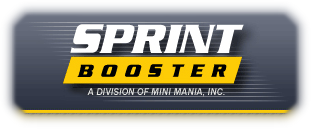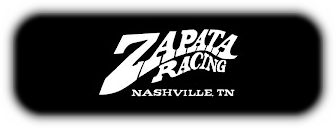























|
|
The Phil Wicks MINI Driving Academy is the world's best-known MINI specific driving school.
We are centered squarely on the MINI Cooper. You will share the track with other MINI
owners and your instructors will have experience driving a MINI Cooper. There is, after
all, no other car like it and the Phil Wicks MINI Driving Academy is like no other school
in the world today. It is taught by the world's leading authority on MINI driving, Phil
Wicks. Phil has been driving the legendary car from the very beginning in the early 1960s.
In fact, Phil played a major role in helping to craft the car's transformation from modest
economy car to a historically successful race car. He raced Europe's greatest racing
circuits in a Mini and brought to the track the world's first MINI Cooper "S" race car.
It is a history that travels full circle when Phil founded the Academy in 2002 with the U.S.
introduction of the modern MINI to U.S. consumers. If you desire to drive your MINI Cooper in a more spirited manner with greater confidence and awareness, in a safe and controlled track environment, to become a more capable driver of the MINI's superb handling, to share the track with other like-minded MINI owners, you have found your Academy and we would welcome you and your MINI to the next Phil Wicks MINI Driving Academy scheduled nearest you. Let's motor... with greater skill and knowledge from the lessons learned from the driving school designed from the outset solely around the MINI Cooper. |
|
One on One with Phil Wicks By special arrangement, Phil Wicks is available to provide exclusive instruction -- one on one instruction -- in the student's own car. The One on One activities are offered at Carolina Motorsports Park in Kershaw, South Carolina, just north of the historic town of Camden. The "One on One with Phil Wicks" day(s) consists of specific classroom instruction depending on the vehicle driven. Classroom instruction includes not only proper car control, but also vehicle dynamics so that the student understands vehicle behavior before undertaking the practical driving experience. Alternating with the classroom instruction is on-track tuition by Phil Wicks in a curriculum specifically designed for the student's skill level and personal driving goals. Throughout the day, Phil discusses the student's progress and makes recommendations for driver improvement. At the completion of the course, the student receives a Certificate of Completion and a follow-up written evaluation of the student's driving performance with suggestions for continued safe driving practices. Also included may be suggested car modifications to improve safety, vehicle handling, and vehicle performance. One on One with Phil Wicks -- Competition Driving Specfic instruction has been designed for competition driving -- Solo I Autocross, Time Trials, Racing, etc. With 56 years of racing experience, Phil's history and resume of driving on most of the world's famous tracks (Nurburgring, Spa, Brands Hatch, Silverstone, LeMans and 18 tracks in America), provides him with the vast technical and practical knowledge to assess vehicle/driver performance. He is uniquely placed to consult with any vehicle/driver combination to improve performance. During 2010/2011 racing seasons, Phil competed in nine classic races -- winning 7, placing 3rd in one, and one DNF due to broken fan belt. In the 2011/2012 racing seasons Phil competed in seven classic races placing 1st in each of them. Phil Wicks Driving Academy This activity is designed for groups of drivers. Classes are divided into skill groups, and alternate between classroom instruction and on-track driving sessions with Phil's highly qualified instructors. You can expect as many as six 20-minute on-track sessions during the one-day class -- depending upon your group and size of class. Regardless, the Phil Wicks Driving Academy is an excellent value when combining the instruction, the track time, and learning individual vehicle dynamics. All makes and models of cars are welcome at the Phil Wicks Driving Academy! As a racer, stunt driver, and engineer, Phil is in a unique position to instruct drivers of classic and modern cars. His insight into the makeup and handling of cars will make you a safer, more skillful driver on the street or track. In fact, Phil's association with the development and driving of classic and modern cars has earned Phil the support and recognition of many car manufacturers for his Driving Academy. First we'll help you select your skill group:
Class hours vary according to venue and time of year. Generally, instruction begins at 8 am and ends at 5 pm, with adjustments for weather, visibility, or other unforeseen conditions. A short lunch break is included. With nearly eight hours of instruction, you can expect a full day of on-track sessions! |
|
The Phil Wicks Driving Academy has announced a driving program for young drivers to prepare
them for situations and emergencies experienced while driving. Phil Wicks has over 50 years of
driving experience including everything from driving as a chauffeur in Rolls Royce limousines
to driving racecars on the European race circuit. The academy includes classroom instruction
to teach general vehicular knowledge and care, and proper driving behavior. Alternating with the
classroom will be in-car sessions with areas of the course set up to simulate various road conditions
such as a skid pad area for navigating wet and slick roadways, emergency braking, and emergency lane
changing. All of this will be in the student's own car with supervised instruction. At some locations,
the student will have the opportunity to drive on an autocross course to provide practical application
of the skills learned. (Autocross is a driving course outlined by orange cones on an open parking lot.) Emergency Braking and Stopping ABS (Antilock Brake System) and Non-ABS braking: Classroom: Explanation of the various braking systems on older and newer vehicles, and the techniques of applying them to all road conditions; i.e. dry, wet, loose surface, mud, ice, snow. Explanation of the discipline marked by cones on the driving course. On course: Students take their positions in their own cars, with an instructor, ready to driving the "braking course." Every student will make several passes through the course (as many as needed to feel comfortable and confident.) The student will have an understanding of braking in emergency situations and ABS and non-ABS systems. Slalom Classroom: Explanation of the effect of weight transfer from sided to side, and front and rear of the car when under acceleration, braking, steering input, suspension, springs, shock absorbers, brakes, sprung weight, unsprung weight. On course: Students take their positions in their cars with an instructor ready to drive the slalom, every student mill make several passes through the course (as many as it takes) to feel the weight transfer of the car, and be able to control and anticipate the "fishtail" effect -- weight transfer from side to side which will induce a spin out in the hands of an untrained driver. Emergency Lane Change and Braking Classroom: Explanation of the course marked by cones which is the combination of emergency braking and slalom. On course: This discipline depicts a three-lane highway with an object in the center lane to be avoided (cones). Students drive in the center lane with an instructor. Some distance ahead, a signal is given -- either a light or a flag -- for the student to take the left or right lane to avoid the cones. With each pass of the course, the speed is increased and/or the signal to change lanes is given later. The object is for the student to use vision to take the lane indicated by the light or flag, negotiate the course without knocking over cones, and stop in a given line. The student makes as many passes as necessary to become proficient. Skid Pad Classroom: Explanation of skidding cars and how to control them. Understeer (push) -- while turning the steering wheel left or right, the car wants to go straight. Explanation as to how to control and avoid this. Oversteer (loose) - while turning the steering wheel left of right, the car wants to turn around on its own axis, normally resulting in a spin. Explanation as to how to control and avoid this. On course: This course is either a large circle or a figure 8. Marked by cones and where possible, the surface is made slippery (slick) to induce skidding at a low speed. The student learns to control and anticipate the car's reaction to weight transfer and steering inputs. You and Your Car Just remember -- the brain passion and logic doesn't develop until age twenty +. As the driver of the car, you are ultimately responsible for safety and road worthiness of your vehicle. Before sitting in your car every day you intend to drive, walk around your car and inspect for anything loose or falling off, including the underside. Especially check the tires and tire pressures. Many accidents are caused by under-inflated tires. You must inflate the tires to the correct pressure as recommended by the car manufacturer. This must be checked at very regular intervals. Checking every time you get gas is a good time. Sitting in the driver's seat, adjust your seat to the correct driving position. Your feet must comfortably reach the pedals. Also check the height of the seat and the backrest. You must be able to reach the top of the steering wheel without reaching too far. Don't be too close, either. 12-14 inches is normal. A very important factor for a correct distance from the steering wheel is the steering wheel "airbag." It is a soft balloon that cushions you when deployed. It is an explosion that can harm you. Never have any objects between the steering wheel and your body under normal driving conditions. Try not to keep your hands on the top part of the steering wheel. Adjust the headrest (if fitted) to be near the back of your HEAD -- not your NECK. If this is not adjusted correctly, a neck whiplash will be the result in the event of a rear impact collision. Adjust the mirror to be able to see the driving lanes on either side of your car. You do not need to see the rear of your own car. Click your seatbelt around you and pull as tight as is comfortable. Most automatic seat belts can be "locked". Remember -- you are solely responsible for your car and your actions when driving. You are also responsible for the safety of your passengers. Concentrate!!! Do not allow passengers to distract you. Avoid conversation with passengers. Distractions are the #1 cause of all driving accidents. Accidents go up proportionately to the number of passengers you are carrying; i.e. 1 passenger = twice as likely increase; 2 passengers = three times likely; 3 passengers = 4 times likely. Most accidents are caused by driver distraction or driver error. Therefore, it is NOT an accident. Using the Senses Sight: Never stare at the vehicle in front of you (target fixation.) Your gaze should be far in front of you to anticipate any situation. Always look where you want to go, not where you are going. You always drive where you are looking. Use your peripheral vision. You can see moving objects at the side of you sooner and clearer than stationary objects. Hearing: Learn to identify the noises of your car and other vehicles around you. Smell: Learn to identify smells such as tires skidding, brakes overheating, coolant from radiator, etc. |
|
"I just wanted to say thanks for putting on such a great event at Talladega Gran Prix this weekend. You and
your team were great instructors. I learned quite a lot, and I had a great time pushing myself and my car on
the track... I'm looking forward to coming to another event in the future. Thanks Again!" Andy B. "This past Saturday, I took my daughter, who will turn 16 at the end of the year to the Phil Wicks (www.minidriving.com) Teen Driving/Safety class at the Nashville Superspeedway. There were 7 students and 3 instructors, who were absolutely great in working with the students. Phil and his wife Norree and everyone affiliated with them take this very seriously, and I want to thank them for their efforts and dedication. She went to driving school early this year, but this was designed to teach car control, accident avoidance, and technique rather than simply how to pass a driving test and get your license. If anyone has a teenager, I would highly recommend enrolling in this type of course. I cannot tell you how much it meant to BOTH of us to learn what she did. For the price of an ipod or a prom dress, this is something they'll benefit from forever and might even save their life. It was everything I hoped it would be, AND MORE! Anyone can benefit from this course, and it is really not just for teens!" Randy Shemin Hi Phil, Just wanted to thank you for putting together another great day for Kim and I. We had a blast! I was a little hesitant about running the safe driving course but I did learn alot from it. Kim had a great time and learned tons running with the Intermediate group. She started off being very intimidated and letting everyone pass her, as the day went on her confidence grew and grew. By the end of the day, only the really fast people could catch her. Also as the day went on, her smile grew and grew because she truly was having fun. As always we both learned tons from you and our instructors on how to drive safely and how to get more from ourselves and our Mini Cooper... Cheers! |